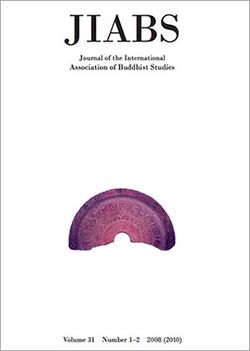Category:Journal of the International Association of Buddhist Studies
Journal of the International Association of Buddhist Studies
The JIABS publishes only substantial book review articles. Publishers are advised to consult with the editors before sending review copies.
The JIABS is published yearly.
Pages in category "Journal of the International Association of Buddhist Studies"
This category contains only the following page.

